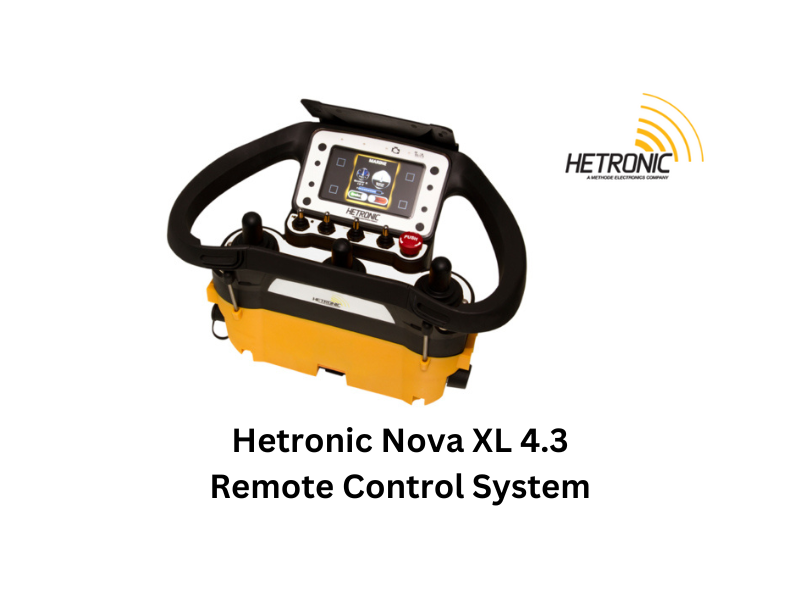Introduction – Wireless Crane Receivers
In the fast-paced world of construction and heavy industry, efficiency and safety are paramount. As technology continues to advance, one innovation stands out for its potential to transform jobsite operations: wireless crane receivers.
These cutting-edge devices are not just a trend; they’re revolutionizing the way cranes operate, offering a host of benefits that can significantly impact your bottom line and workplace safety.
In this comprehensive guide, we’ll explore the seven powerful advantages of incorporating wireless crane receivers into your operations, and why they’re becoming an indispensable tool for forward-thinking businesses.
The 7 Powerful Benefits of Wireless Crane Receivers
1. Enhanced Safety: Protecting Your Most Valuable Asset
Safety is the cornerstone of any successful operation, and wireless crane receivers take it to the next level. By eliminating the need for physical cable connections, these devices significantly reduce the risk of accidents caused by cable entanglement or failure. Operators can now control cranes from a safe distance, away from potential danger zones.
Key Safety Features:
– Remote operation reduces exposure to hazardous areas
– Elimination of cable-related accidents
– Improved communication between operators and ground crew
According to a recent industry study, jobsites that implemented wireless crane receivers reported a 35% decrease in crane-related incidents within the first year of adoption.
2. Increased Productivity: Streamlining Operations for Maximum Efficiency
Time is money, and wireless crane receivers help you make the most of both. By enabling operators to control cranes from any vantage point, these devices eliminate the need for constant repositioning, leading to smoother, more efficient operations.
Productivity Boosters:
– Reduced setup and teardown time
– Flexibility in operator positioning
– Seamless coordination of multiple cranes
One construction firm reported a 20% increase in daily lifting operations after switching to wireless systems, translating to significant time and cost savings.
3. Cost-Effectiveness: Long-Term Savings for Your Business
While the initial investment in wireless crane receivers may seem substantial, the long-term benefits far outweigh the costs. By reducing the need for cable maintenance and replacement, these systems offer considerable savings over time.
Cost-Saving Aspects:
– Elimination of cable wear and tear
– Reduced downtime for repairs
– Lower insurance premiums due to improved safety
A mid-sized construction company calculated an ROI of 300% within three years of implementing wireless crane receivers across their fleet.
4. Improved Precision: Millimeter-Perfect Control at Your Fingertips
Wireless technology has come a long way, and modern crane receivers offer unparalleled precision. With high-resolution displays and sensitive controls, operators can execute lifts with pinpoint accuracy, even in challenging conditions.
Precision Advantages:
– High-resolution feedback for exact positioning
– Smoother load control
– Reduced risk of collisions and damage
Operators report being able to place loads within a 5mm margin of error consistently, a level of precision previously unattainable with traditional systems.
5. Enhanced Versatility: Adapting to Any Job, Any Time
One of the most significant advantages of wireless crane receivers is their adaptability. These systems can be quickly configured for different crane types and job requirements, offering unparalleled flexibility on diverse projects.
Versatility Features:
– Compatible with multiple crane models and brands
– Easy switching between different control modes
– Customizable button layouts for specific tasks
A survey of construction managers found that 87% cited improved versatility as a key factor in their decision to adopt wireless crane receivers.
6. Reduced Operator Fatigue: Keeping Your Team Fresh and Focused
Traditional crane operation can be physically demanding, leading to fatigue and decreased performance over long shifts. Wireless receivers allow operators to work in more comfortable positions, reducing strain and improving overall job satisfaction.
Ergonomic Benefits:
– Freedom to operate from ergonomic positions
– Reduced physical strain from cable management
– Improved visibility and situational awareness
Companies implementing wireless systems reported a 40% decrease in operator complaints related to physical discomfort and fatigue.
7. Future-Proofing Your Operations: Staying Ahead of the Curve
As the construction and industrial sectors continue to evolve, wireless crane receivers represent a step towards the future of jobsite technology. By investing in these systems now, you’re positioning your business to seamlessly integrate with upcoming innovations in automation and data analytics.
Future-Ready Features:
– Easy software updates for new functionalities
– Integration with IoT and smart jobsite systems
– Data collection capabilities for performance analysis
Industry analysts predict that by 2026, 75% of new crane installations will feature wireless control systems as standard equipment.
Frequently Asked Questions About Wireless Crane Receivers
Q1: Are wireless crane receivers reliable in all weather conditions?
Absolutely. Modern wireless crane receivers are designed to withstand harsh environmental conditions. They’re built with robust materials and advanced signal processing technology that ensures reliable performance in rain, snow, dust, and extreme temperatures. Many models are rated IP67 or higher, indicating complete protection against dust and water immersion.
However, it’s essential to choose receivers from reputable manufacturers and follow proper maintenance procedures to ensure optimal performance in all conditions.
Q2: How do wireless crane receivers impact battery life on remote controls?
Battery life is a common concern, but technological advancements have significantly improved power efficiency. Most high-quality wireless remote controls now offer battery lives of 12-24 hours on a single charge, easily covering a full shift. Many systems also feature quick-change battery packs, allowing for seamless operation during recharging.
To maximize battery life, operators should follow manufacturer guidelines for charging and storage, and consider keeping a spare battery on hand for extended operations.
Q3: Can wireless crane receivers be hacked or interfered with?
Security is a top priority for wireless crane receiver manufacturers. Modern systems employ advanced encryption protocols and frequency-hopping technology to prevent unauthorized access and interference. Many also feature unique pairing processes between the transmitter and receiver, adding an extra layer of security.
While no system is 100% foolproof, the risk of hacking or interference is extremely low when using properly maintained, up-to-date equipment from reputable manufacturers.
Q4: How difficult is it to train operators on wireless crane receivers?
Most operators find the transition to wireless systems surprisingly smooth. The intuitive nature of wireless controls often resembles familiar devices like smartphones or gaming controllers, making them easy to adapt to. Many manufacturers offer comprehensive training programs, including simulators and on-site instruction.
On average, experienced crane operators can become proficient with wireless systems within 2-3 days of training, with full mastery achieved after a few weeks of regular use.
Q5: What maintenance is required for wireless crane receivers?
Compared to traditional wired systems, wireless crane receivers require minimal maintenance. Regular inspections of antennas, transmitters, and receivers for physical damage are essential. Software updates should be performed as recommended by the manufacturer to ensure optimal performance and security.
Most systems have self-diagnostic capabilities that alert operators to potential issues before they become critical, further reducing maintenance downtime.
Conclusion – Embracing the Wireless Revolution
The benefits of wireless crane receivers are clear and compelling. From enhanced safety and productivity to long-term cost savings and future-readiness, these innovative devices are transforming jobsites across industries. As we’ve explored, the advantages extend far beyond mere convenience, offering tangible improvements in efficiency, precision, and operator well-being.
For businesses looking to stay competitive in an increasingly tech-driven world, adopting wireless crane receivers is not just an option—it’s a necessity. The question is no longer whether to make the switch, but how quickly you can integrate these game-changing tools into your operations.
As you consider upgrading your crane systems, remember that the initial investment in wireless technology pays dividends in safety, efficiency, and adaptability. It’s an investment in your company’s future, your workers’ well-being, and your competitive edge in a rapidly evolving industry.
Take the first step towards revolutionizing your jobsite today. Explore the wireless crane receiver options available for your specific needs, and prepare to experience the transformative power of cutting-edge technology in action. Your team, your clients, and your bottom line will thank you for embracing this wireless revolution.





